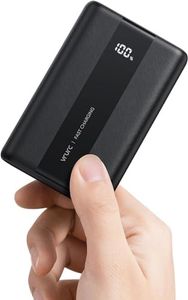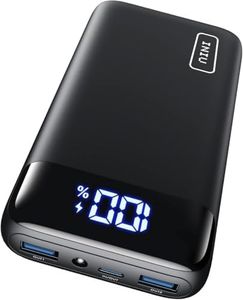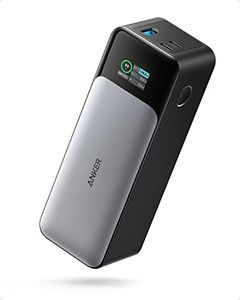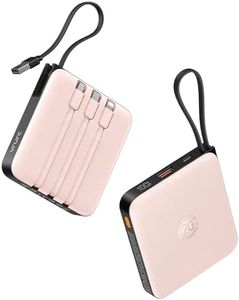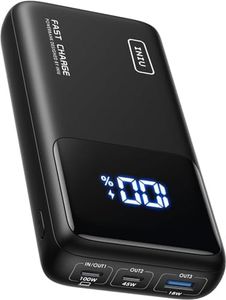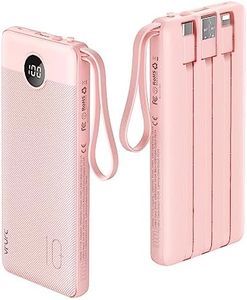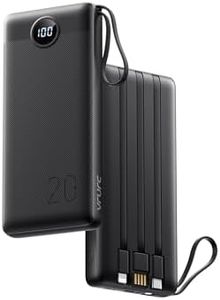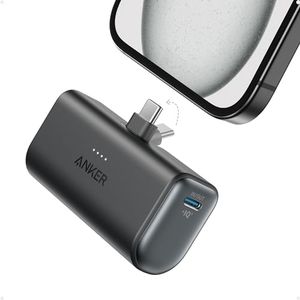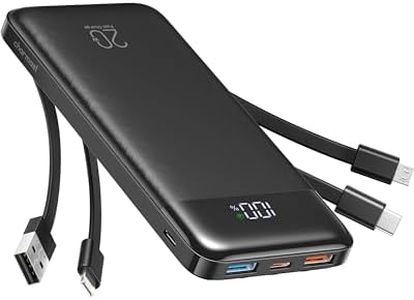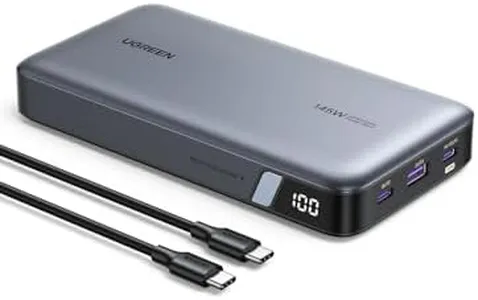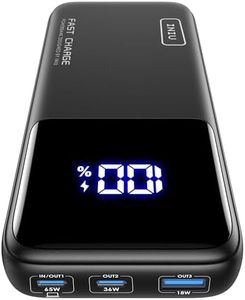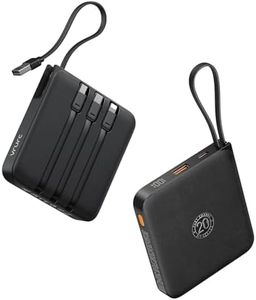We Use CookiesWe use cookies to enhance the security, performance,
functionality and for analytical and promotional activities. By continuing to browse this site you
are agreeing to our privacy policy
10 Best Power Bank Chargers
From leading brands and best sellers available on the web.By clicking on a link to a third party's website, log data is shared with that third party.
Buying Guide for the Best Power Bank Chargers
Choosing the right power bank charger can make sure your devices stay powered up when you're away from an outlet. There's a wide range of options, so it's important to pay attention to key features to pick one that's best for your needs. Think about what devices you'll be charging, how frequently you'll be using the charger, and how portable you need it to be. By understanding the main features and what they mean, you’ll be able to make a confident and practical choice.Capacity (mAh)Capacity is measured in milliamp hours (mAh) and tells you how much charge the power bank can store. This is important because it determines how many times you can recharge your devices before needing to recharge the power bank itself. Generally, smaller capacities (around 3,000–5,000 mAh) can give one full phone charge and are lightweight, making them easy for daily carry. Medium capacities (10,000–15,000 mAh) can charge most phones two to three times and can sometimes top-up tablets, offering a good balance of size and power. Large capacities (20,000 mAh and above) are heavier but can charge several devices multiple times or power larger devices like tablets. Choose the right capacity based on how many devices you need to charge and how long you’ll be without access to a wall outlet.
Output Power (Watt/Amps)The output power, usually shown as watts (W) or amps (A), tells you how fast the power bank can supply power to your devices. This matters because higher output means faster charging. Basic power banks have outputs of 1A, which is enough for most phones, while 2A or higher is better for tablets and faster charging. Some devices and newer phones require even higher outputs (like 18W or 20W) for fast charging. If you want to charge big devices or need your phone to recharge quickly, look for a power bank with higher output; if speed isn't important, lower output will still work but a bit slower.
Number and Type of OutputsThis refers to how many devices you can charge at once, and what kind of ports are available. Most power banks have one or two USB-A ports, and many now offer USB-C ports for newer devices. Some even have built-in charging cables or wireless charging features. If you have multiple devices or have both old and new gadgets, pick a power bank with enough ports and the right types (USB-A, USB-C, maybe micro-USB) to match what you own. Think about how many devices you’d need to charge at the same time when choosing.
Recharge TimeThis is the time it takes to fully recharge the power bank itself after it runs out of power. Some power banks have quick input charging (through USB-C or fast-charge support), which means they get ready for use more quickly. If you’re someone who often needs the power bank and can’t plug it in for hours, look for models with fast input charging. Otherwise, long recharge times may not be a problem if you can leave it overnight.
Size and WeightPortability is a big factor—smaller, lighter power banks are easier to carry in a pocket or bag, but they usually have less capacity. Larger models can be bulky, but they store more power. If you travel light or just need a little backup, go for compact models. If you’re going to be away from power for a long time (camping, long trips), larger options might be worth the extra weight.
Safety FeaturesGood power banks have safety features like short-circuit protection, overcharge protection, and temperature control. These help prevent damage to your devices and the power bank itself, especially if you charge unattended or use it a lot. Always check if the power bank lists safety certifications or features to be sure you’re picking a safe product.
